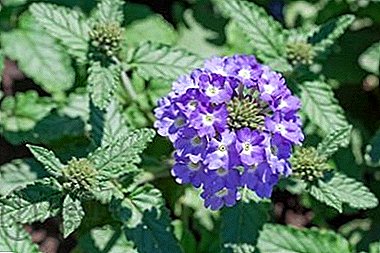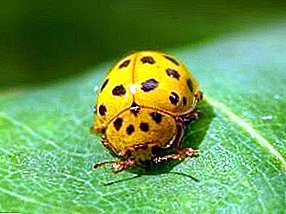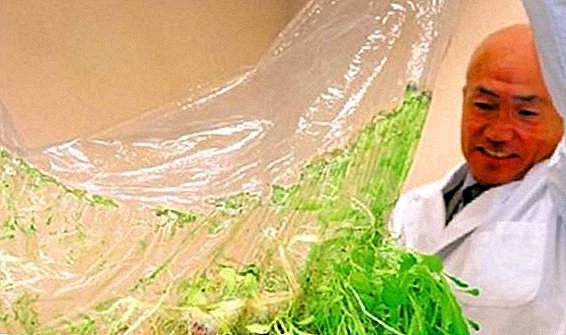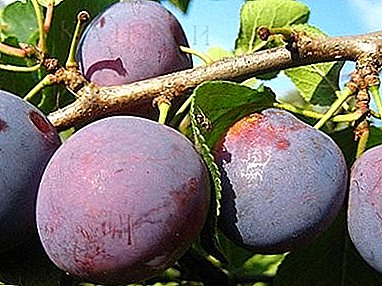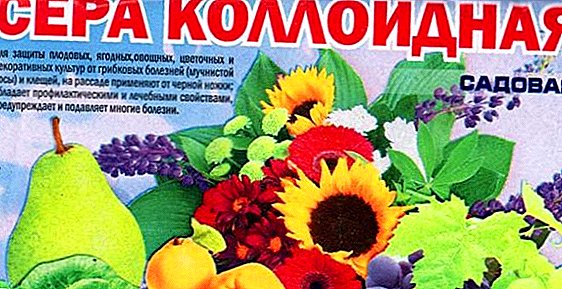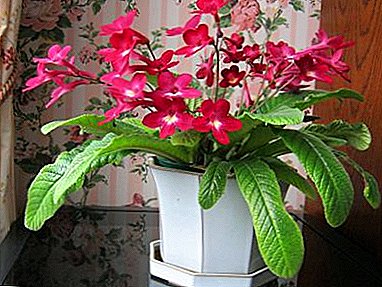
Streptokarpus - an exotic flower, quickly gaining popularity among lovers of indoor plants and in need of careful and caring care.
Sometimes growers notice that the leaves of the plant look sluggish, change color and begin to dry, and most of all they are sad that the flowering period does not occur. All this suggests that streptocarpus is sick or has been attacked by pests.
Brief description of the flower
Streptocarpus (lat. Streptocarpus) - plant of the family Gesneriyevye, comes from subtropical and tropical forests located on the slopes of the mountains of Thailand, islands of Madagascar and South Africa. Depending on the species, some streptokarpus prefer arid terrain, while others - shady forests. This plant can be annual or perennial, grassy and shrub.
The wrinkled and pubescent leaves of streptocarpus grow up to 30 cm in length and 5-7 cm in width, have a green, and the bred varieties have a motley color. Bell-shaped flowers have elongated lower petals of various colors and are located on high peduncles emerging from the leaf sinuses.
The fruit in the form of a twisted pod became the cause of the name of the plant, which is translated from the ancient Greek language as "twisted fruit". Inside the fruit contains flower seeds. Next, you will learn about flower diseases, their treatment, you will see in the photos what different problems and pests look like.
Diseases and their treatment
Like most plants, streptokarpus not protected from diseases and various problems with leaves and flowering. Most often they occur as a result of improper care of the flower, so it is so important to observe. However, most diseases can be dealt with if they are detected in time and the necessary actions are taken.
Why does rust appear and what should I do?
Leaves, stems, flower petals, leaf stalks, seed-boxes can be seen pods of gray-brown color, emitting volatile spores. They appear yellow spots ("rusty" bloom) on the leaf plates and eventually hit the whole flower. The causes of this disease may be excessive watering, too much fertilizer containing nitrogen and planting density.
If the disease is detected at an early stage, it is necessary to remove all the affected shoots and leaves. In the case of neglected diseases, one cannot do without the use of fungicides, such as, for example, Abiga-Peak, Baktofit, Topaz, Fitosporin-M. The first treatment is carried out as soon as "rust" is found on the leaves., further repeated after 7-14 days.

Dry leaves
If the sheet of streptokarpus became almost completely dry in a short period of time, then this is a clear sign of a low level of humidity in the room. In addition, the plant does not have enough fresh air.
In order to fix this problem you should:
- remove all dry leaves;
- spray the space around the plant and do it regularly;
- place a container with water next to the flower.
You should also periodically air the room in which the plant is located. Prevention of this problem with leaves is to control the temperature and humidity in the room.

Drying of the tips of the leaves
When the leaves of the flower begin to dry and do it unevenly, starting from the tip, this may be caused by an insufficiently high level of humidity in the room or by the fact that the root system has become cramped in the pot. To help a plant, you need:
- gently trim the dry parts of the leaves;
- sprinkle with slices of crushed activated or charcoal or cinnamon powder;
- spray the air around the flower, ensuring that no water drops fall on the flower itself.
The plant does not bloom
Sometimes it happens that streptokarpus stopped producing flower stalks, there are several explanations for this:
- perhaps this variety does not bloom in winter, and there is no need to do anything except wait for spring;
- some species, before blooming, need to gain green mass, which is enough to bloom.
If the plant is an adult, a large enough rosette, but does not bloom, it means that there are mistakes in the content of the flower:
- the flower is located in the shade - the pot should be moved closer to the light, but in no case should the sun be allowed to enter;
- over-irrigation, due to which the root system could begin to rot - remove the plant from the pot, remove the damaged roots, treat the sections with an antiseptic and plant a flower in a new soil with drainage at the bottom of the pre-disinfected pot;
- lack of nutrients in the ground - you need to feed the plant with fertilizer;
- designed decorative foliage room flowers;
- bushes streptokarpus too thickened - it is necessary to remove single small leaves from the petioles of the main leaves.
Besides, flowering may be absent due to aging foliage. In this case, you need to divide the plant and transplant parts into new flowerpots, this will contribute to the emergence of new leaves.

Pests
Thrips
This is a small arthropod insect, whose length is only 1-2 mm, it is almost impossible to see. These pests feed on plant sap. Yellow or brown spots appear on the leaves and stem, the leaves dry out and curl from the edge to the middle, traces of perforation from the sharp chewing apparatus are visible on the dried leaves, and insects excrement are visible on the outer and inner parts of the leaf.
The method of struggle:
- when symptoms are detected during the flowering of streptocarpus, it is necessary first of all to remove all the flowers and buds;
- Insecticide treatment regularity depends on the life cycle of the insect: after a single treatment, adults and larvae die, but the nymphs remain intact, so treatment should be carried out three times every 7 days (you need to prepare a solution, diluting 1 vial "Fitoverma" in 1 glass of water).
Any solution loses its properties during storage, so you need to use it immediately.

Spider mite
If during the inspection of the lower part of the leaf plate, between the veins, an oily gloss is found, the leaf surface has a brown tint, and the leaf itself is yellowish and dries, starting from the edges, these are signs of the presence of a spider mite.
Important! Mite tolerates infectious diseases.
Conventional insecticides are powerless in the fight against the pest, therefore need to use modern acaricides, such as "Sunmite", "Nissoran", "Apollo". Depending on the means chosen, the methods of treating the plant and preparing the solution differ:
- "Sunmite" - 1 gram of powder on 1 l. water. The drug is moderately dangerous, it can be used only once a year.
- "Nissoran" - 1 gram of drug per 1 liter of water, shake the spray with a solution and process the leaves from all sides. The tool is effective before large populations of adult individuals appear.
- "Apollo" - 4 ml of the drug diluted in 10 liters of water.
When working with acaricides, you must use personal protective equipment., after treatment, it is necessary to wash the face and hands with soap and water, rinse the mouth, in which the preparation was burned, without inhaling the products of combustion.

Aphid
This is a small insect with a soft green or orange body. The insect moves in air streams over long distances, and therefore it seems that it appears on plants spontaneously. As soon as the aphid hit the flower, it multiplies rapidly, and females can produce offspring at the age of 3-6 days.
Most often attacked by aphids plants that are regularly transfused or overdry. The insect can appear in the center of the plant, on flowers, buds and their stems. The pest feeds on the sap of plants, absorbing and passing it through the body, after which a sticky layer appears on the foliage and, as a result, a dark mold forms, which disappears when the aphid disappears.
Signs of the presence of aphids are - a large number on the plant of white membranes from the larvae, twisting the leaves and their acquisition of an unusual shape. To fight insects need to prepare a solution, diluting 10 ml of the Iskra Bio, dilute in 1 liter of water. Every 7 days, spray all plants three times.

General rules for pest control
Isolation of a sick plant
Disease and insects can spread to plants located near the affected streptocarpus, therefore, at the slightest signs of a disease or pest, it is necessary to isolate it from other flowers as early as possible by putting it on a separate window sill or shelf.
Treatment with protective agents
In order to prevent the development of diseases and attack of pests, the plant should be treated with protective agents, such as "Fitoverm". To do this, dissolve 2 ml of the drug in 200 ml of water and spray the flower with the resulting solution every 5-8 days. You can also use "Aktofit" and "Kleschevit."
Diseases to which streptocarpus is exposed are standard for all houseplants. To avoid problems when growing this flower, you need:
- follow the regularity of watering;
- avoiding excessive dryness or excessive moisture of the substrate;
- protect the flower from direct sunlight;
- regularly air the room and maintain a fairly high level of humidity;
- carrying out preventive treatment of plants from insects and pests.


